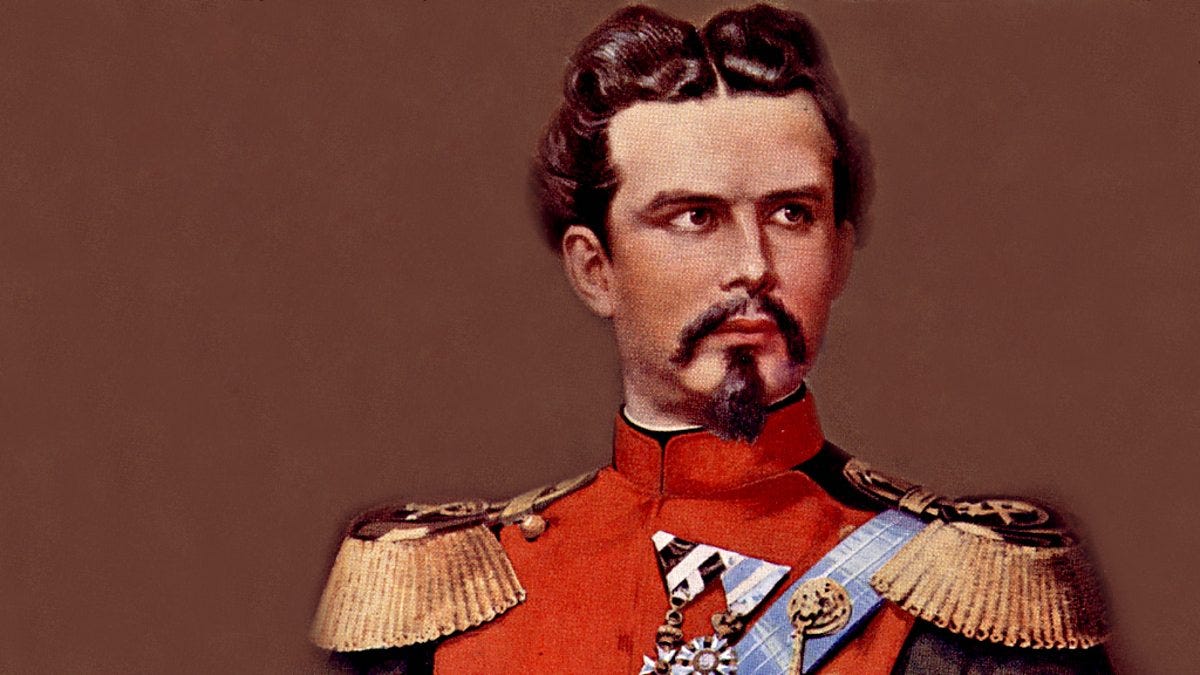Ludwig II of Bavaria, King Ludwig II, Mad King Ludwig, Bavarian monarchy, Neuschwanstein Castle, Ludwig II biography, Ludwig II’s legacy, Bavarian history, Ludwig II’s castles, Bavarian culture.
Introduction
Ludwig II of Bavaria, often dubbed the “Mad King” or the “Fairy Tale King,” continues to fascinate and intrigue generations with his eccentricity and artistic fervor. Born into royalty on August 25, 1845, Ludwig inherited the Bavarian throne at a young age and embarked on a reign marked by grandeur, opulence, and enigma. From his patronage of the arts to his iconic architectural endeavors, Ludwig II’s legacy endures as a testament to his singular vision and unconventional reign. In this SEO-friendly article, we delve into the captivating life and reign of Ludwig II of Bavaria, exploring his contributions, his famed castles, and the enduring mysteries that shroud his fascinating persona.
The Early Years and Ascension to the Throne
Ludwig II ascended to the Bavarian throne at the tender age of 18 following the untimely death of his father, King Maximilian II. His early years were marked by a deep appreciation for the arts, literature, and music, fostering a lifelong passion that would shape his reign and legacy. Despite his royal duties, Ludwig often retreated into a world of fantasy and imagination, finding solace in the works of Richard Wagner and the romantic ideals of chivalry and medieval lore.
As Bavaria’s monarch, Ludwig II’s reign was characterized by a fervent pursuit of artistic excellence and architectural splendor. His patronage of renowned artists and composers, most notably Wagner, reflected his commitment to nurturing Bavaria’s cultural heritage. However, it was Ludwig’s ambitious architectural projects that would ultimately define his legacy and capture the world’s imagination.
Read Also:Henry VI of England: The Tragic Reign of a Weak King
Architectural Marvels: Neuschwanstein and Beyond
Ludwig II’s enduring legacy is perhaps best exemplified by his visionary architectural endeavors, notably the iconic Neuschwanstein Castle. Inspired by the romantic ideals of his youth and the picturesque landscapes of Bavaria, Ludwig embarked on a quest to create a fairy-tale fortress that would transcend reality and captivate the imagination.
Perched atop a rugged hilltop overlooking the Bavarian countryside, Neuschwanstein Castle stands as a testament to Ludwig’s architectural vision and romantic sensibilities. Designed in the lavish style of medieval castles yet equipped with modern amenities, the castle’s ornate facades and opulent interiors evoke a sense of timeless grandeur and enchantment.
Beyond Neuschwanstein, Ludwig II’s architectural legacy extends to other notable landmarks, including Linderhof Palace and Herrenchiemsee Palace. Each structure bears the imprint of Ludwig’s extravagant tastes and meticulous attention to detail, serving as a testament to his unwavering commitment to artistic excellence and cultural preservation.
The Mystery and Intrigue of Ludwig’s Reign
Despite his artistic achievements and architectural marvels, Ludwig II’s reign was overshadowed by controversy, scandal, and intrigue. His eccentric behavior, reclusive tendencies, and extravagant spending drew scrutiny from his ministers and subjects alike, leading to questions surrounding his mental stability and fitness to rule.
The circumstances surrounding Ludwig’s untimely demise in 1886 only added to the mystique surrounding his reign. Officially declared mentally unfit and deposed by his own government, Ludwig’s death, ruled a suicide by drowning, remains shrouded in mystery and speculation. Conspiracy theories abound, ranging from political intrigue to foul play, fueling endless fascination with the “Mad King” of Bavaria.

